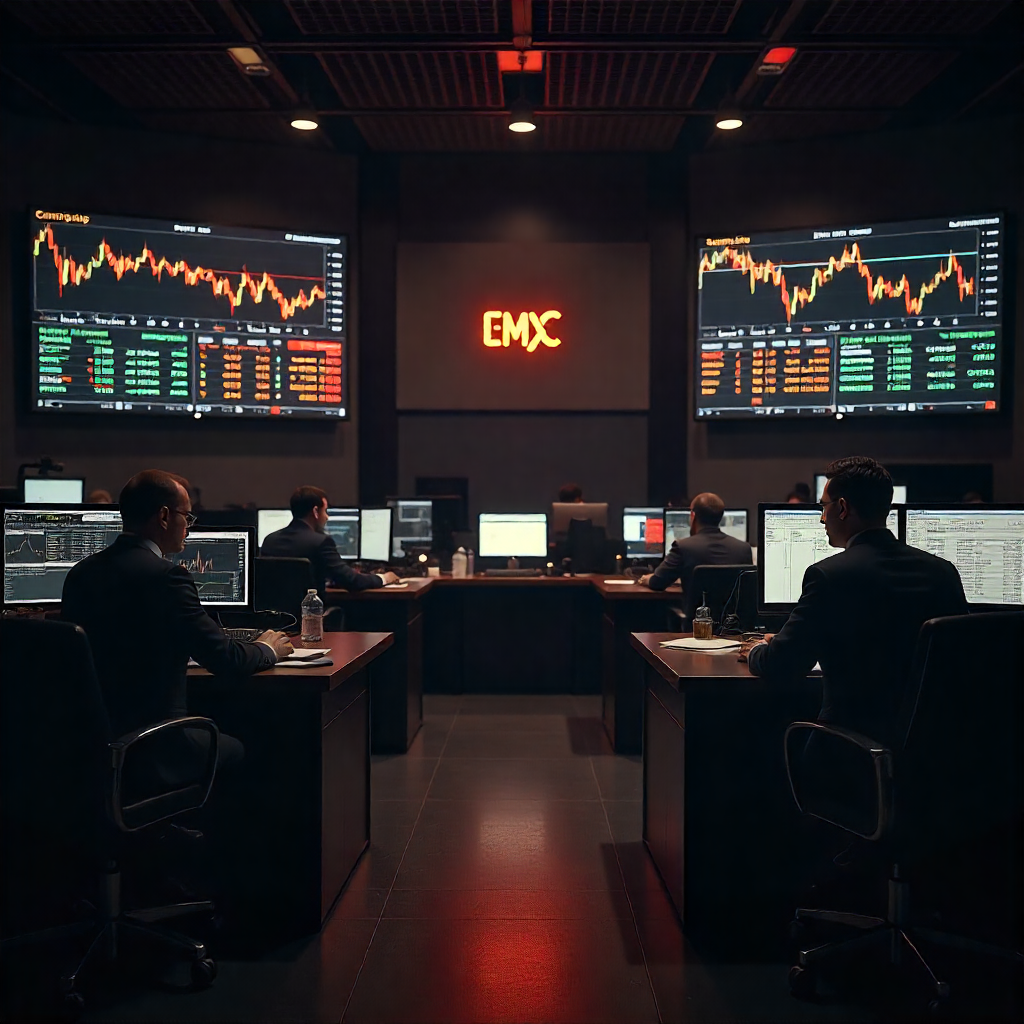Vitalik Buterin predicts a monumental shift in tech: AI‑blockchain convergence will soon reshape how we build and trust systems. At ETH Singapore, he boldly stated AI could “outpace current crypto trends” in public attention and volatility. This sets the stage for AI‑blockchain convergence.
AI‑blockchain convergence combines decentralized ledger trust with AI’s decision‑making. It promises powerful synergies across industries. Developers working at this intersection gain a unique edge.
This article forecasts how AI‑blockchain convergence will evolve. We’ll unpack current trends, Vitalik’s warnings, use cases, and technical barriers. We’ll then map a roadmap for AI developers in hybrid systems.
By the end, you’ll understand why AI‑blockchain convergence matters, where it’s headed, and how to build it. This clarity empowers your next-generation designs.
The Current State of AI‑Blockchain Integration
Let’s look at how AI‑blockchain convergence is evolving today. This section lays the groundwork for understanding its potential.
AI Optimizing Blockchain Operations
Companies now deploy AI to boost mining efficiency. Quantum Blockchain’s AI Oracle claims ~30% higher hash rates and lower energy costs in live tests.
AI also tunes consensus protocols and optimizes node performance, though adoption remains experimental.
AI Enhancing Security & Fraud Detection
AI models now track suspicious activity on-chain. A joint Elliptic‑MIT‑IBM AI flagged laundering patterns in 200 million Bitcoin transactions.
AI‑powered code audits are emerging. Vitalik highlighted their use for spotting Ethereum smart‑contract bugs.
Decentralized AI Compute Networks
Projects like NodeGoAI offer peer‑to‑peer GPU and CPU rental via blockchain, enabling shared AI workloads.
Nous Research builds decentralized AI training pools across global GPUs atop blockchain coordination.
Data Integrity & Provenance
Blockchain enhances AI trust by timestamping and verifying training data.
In supply chains, AI predicts logistics and provenance; blockchain ensures immutable data trail.
Cross‑sector Use Cases
In energy, AI and blockchain manage smart‑grid trading and decentralized energy markets.
In healthcare, decentralized federated learning uses blockchain for secure AI‑based diagnostics.
Developer Infrastructure
Protocols like The Graph index on‑chain data for AI apps, forming the data backbone for intelligent dApps.
Vitalik’s 2024 post categorizes crypto+AI intersections, highlighting key developer pathways.
Where We Stand
The state of AI‑blockchain convergence is early but active. Core trends include compute-sharing, security automation, data trust, and cross-industry pilots. These projects lay a strong foundation—but real-world, large-scale adoption still lies ahead.
Next, we’ll unpack Vitalik’s forecast: why he believes AI will soon surpass current crypto trends.
Vitalik’s Forecast: Why AI May Eclipse Crypto Trends
Vitalik argued at ETH Singapore that AI‑blockchain convergence could soon take the spotlight from cryptocurrency. He stated AI might “take the crazy crown from crypto for weeks at a time” in volatility and public attention. This simple phrase reveals a profound shift.
The “Crazy Crown” Shift
AI’s pace and media appeal are growing. While crypto still lags behind in mainstream framing, AI headlines are speeding ahead. The “crazy crown” refers to capturing attention, hype, and investment cycles.
In early 2024, AI‑related crypto tokens tripled returns vs. major cryptos.
AI tokens like Render and Fetch.AI are outperforming in market cap and trade volume.
These trends show AI is not just a side-show, but a central driver in market sentiment.
Capital and Developer Momentum
Massive venture flows now target AI startups. Nvidia’s surge and OpenAI’s influence have shifted investor focus.
Many AI tokens now boast dedicated developer platforms and ecosystems, pulling talent away from pure crypto.
This momentum may position AI as the new frontier, not just a complementary tool.
Why This Matters for Blockchain
AI’s prominence brings both pressure and opportunity:
Pressure on crypto: attention and capital flow may shift toward AI-first protocols.
Opportunity through convergence: AI projects built on blockchain rails could be the next wave.
Vitalik’s forecast isn’t about crypto’s irrelevance. It’s a challenge. As AI accelerates, AI‑blockchain convergence must deliver real-world value—and do so quickly.
Up next, we’ll explore four concrete AI‑blockchain use cases that illustrate this convergence in action.
Four AI‑Blockchain Convergence Use Cases on the Horizon
Decentralized AI Marketplaces
Smart contracts on blockchains enable AI model sharing. Projects like Ocean Protocol and PredictChain offer decentralized exchanges. Tokenization rewards training data or models directly via smart contracts. This setup removes intermediaries, cuts costs, and increases transparency. For developers, it enables monetizable, shareable models.
AI‑Assisted dApp UX & Security
Wallets now integrate AI agents for real-time protection and performance tuning. MetaMask’s Wallet Guard uses AI to detect phishing and optimize gas fees. AI also continually audits smart contract code and execution flow. This smooths user experience while hardening security in dApps.
On‑chain AI Agents & DAOs
Smart contracts now embed AI agents for automation. Use cases include:
DeFi management: Bots rebalance liquidity pools, adjust yields, or execute trades.
Autonomous DAOs: Agents vote, manage treasury, or enforce protocol rules without human input.
These AI-driven frameworks make DAOs more reactive, data-driven, and autonomous.
Prediction & Energy Markets Enhanced by AI
Prediction markets gain from AI‑powered analytics and real‑time forecasting. In energy trading, federated deep reinforcement learning (FDRL) agents interact through tokenized NFTs in decentralized grids. Together, AI and blockchain enable transparent, adaptive, and scalable marketplaces.
Key Synergies & Takeaways
Use Case | Blockchain Role | AI Role
AI Marketplaces | Facilitate resource sharing and token-based payments | Provide models and training
dApp Security | Host AI agents and store audit records | Detect threats and optimize UX
Autonomous DAOs | Execute rules and voting based on data | Analyze and act on complex signals
Markets & Forecasting | Record and settle predictions transparently | Analyze data and forecast trends
These four use cases showcase how AI‑blockchain convergence drives real outcomes. They offer early opportunities. Developers should experiment with marketplaces, intelligent agents, and predictive systems built on trustable blockchain rails.
Next, we’ll address technical challenges you’ll face in these systems.
Technical & Security Challenges in AI‑Blockchain Convergence
Transparency vs. Opaqueness
AI models, especially deep learning, often act as “black boxes.” That means stakeholders can’t explain how decisions happen, harming trust.
Blockchain enforces auditability. When combined with opaque AI, trust suffers. A 2025 paper says immutable ledgers boost decision traceability, but complexity integration lags behind.
Scalability Constraints
Public blockchains struggle with low throughput—Bitcoin handles <10 TPS; Ethereum scales via sharding, L2, but still lags behind centralized systems.
AI workloads demand fast, heavy compute. Marrying them increases latency and congestion.
AI offers relief: predictive models can allocate resources and pipeline data efficiently.
Then again, off‑chain compute plus on‑chain verification is key to reducing bottlenecks.
Security Vulnerabilities
Vitalik cautions against blindly mixing AI oracles into high‑value apps like stablecoins or markets.
AI invites risks—prompt injection, model theft, data leakage.
TechRadar drivers outline how misaligned security and engineering lead to data leaks and AI exploitation.
Blockchain’s cryptography helps but shared compute nodes remain attack vectors.
Integration Complexity
Merging AI and blockchain requires bridging two different stacks.
Studies cite challenges in aligning schemas, APIs, and distributed models with immutable ledgers.
The need for hybrid trusted layers, modular pipelines, and formal interfaces grows exponentially.
The Blockchain Trilemma Extended
Vitalik’s Trilemma says decentralization, security, and scalability can’t all be maximized.
Adding AI introduces a “quadrilemma”—privacy, transparency, compute, and decentralization.
Projects like ZKi3s try to solve it, but AI‑blockchain convergence still stretches consensus limits.
How Developers Can Navigate Challenges
Hybrid Models: Use off‑chain AI, on‑chain verification for trustworthy results.
Modular Architecture: Separate zones for sensitive data and public record.
Formal Verification: Prove behavior of AI oracles and smart contracts.
Security Policies: Build with defensive design, teams collaboration on governance.
Standardized Interfaces: Use unified protocols to reduce schema mismatches.
AI‑blockchain convergence offers compelling opportunities—but it isn’t plug‑and‑play. You must design for clarity, scale, and resilience. In the next section, I’ll map a roadmap for AI developers building at this intersection.
Roadmap for AI Developers Building at the AI‑Blockchain Convergence
Level Up Your Core Skills
Master smart contracts – Learn Solidity, Move, or Rust. Build and test live dApps.
Learn AI fundamentals – Gain hands-on experience with TensorFlow, PyTorch, and transformers.
Understand decentralized data indexing – Explore The Graph protocol, subgraphs, and real-time data feeds.
Embrace Hybrid Architecture
Use off‑chain AI processing while on‑chain verification protects integrity.
Implement optimistic zkML solutions like opp/ai for privacy and efficiency.
Design modular layers that separate sensitive AI logic from immutable blockchain records.
Leverage Specialized Tooling
Integrate The Graph as your data layer for AI-powered dApps.
Use frameworks like DIN’s MCP 2.0 to support on-chain AI agent workflows.
Explore decentralized compute platforms like Nous Research’s Psyche network for GPU sharing.
Harden Security & Governance
Apply formal verification to smart contracts and AI oracle endpoints.
Build security policies to counter prompt-injection and data theft risks.
Design DAO governance systems that include AI agent review protocols.
Follow an Agile, Iterative Process
Prototype with small, testable AI agents on-chain.
Iteratively add features and improve security.
Model after agile methods for blockchain apps to maintain code quality.
Align with Emerging Standards & Communities
Track institutional roadmaps.
Stay engaged in convergence forums like INATBA.
Follow market maturity signals: decentralized AI market cap nearing $1B by 2027.
Launch, Learn, Scale
Build an MLP: small AI agent + smart contract.
Launch in testnet and get real feedback.
Optimize gas, performance, and governance responsiveness.
Scale into full-fledged AI-driven DAO or marketplace.
Your path: build smart contract skills → layer in AI workflow → adopt hybrid architectures and tooling → secure and iterate.
By following this roadmap, you position yourself at the core of future AI‑blockchain convergence—and outpace crypto-only projects.
Strategic Forecast
The future is unfolding at the intersection of AI‑blockchain convergence. Here’s how things stand—and where they’re headed.
Market Momentum & Macro Trends
The global blockchain‑AI market is projected to grow from $680 M in 2025 to over $4.3 B by 2034 (CAGR ~23%).
The World Economic Forum forecasts AI‑enabled DePIN could reach $3.5 T by 2028.
Institutions increasingly explore AI+blockchain to decentralize infrastructure and automate systems.
These figures underscore rapid growth in AI‑blockchain fusion. As both technologies mature, this convergence becomes too large to ignore.
Strategic Forecast for AI Developers
AI-first protocols built on blockchain rails will surge in demand—for compute, security, and governance.
Decentralized AI agents and autonomous systems will debut in real-world pilots and production. Expect DePIN and FDRL to become mainstream.
Regulatory clarity and institutional adoption—especially after acts like the GENIUS Act—will mainstream crypto infrastructure. That drives stable AI agents in finance and identity systems.
Hybrid proofing becomes essential: frameworks like zkML, opp/ai, and verifiable computation will define reliable AI‑blockchain systems.
The Way Forward
Vitalik’s warning is clear: Design for resilience, not hype.
Projects must embed decentralization, transparency, and governance from day one.
Your Role at the Frontier
Be a cross‑stack operator—build AI logic with smart contract integration.
Champion hybrid architecture—off‑chain compute with on‑chain verification.
Join emerging standards & DAOs—help shape verifiable AI ecosystems.
Start small, scale fast—prototype intelligent agents, test in real environments, iterate.
Bottom line: AI is overtaking crypto in momentum. But by marrying both, AI‑blockchain convergence becomes the next frontier. Those who lead it will define decentralized intelligence for decades to come.





